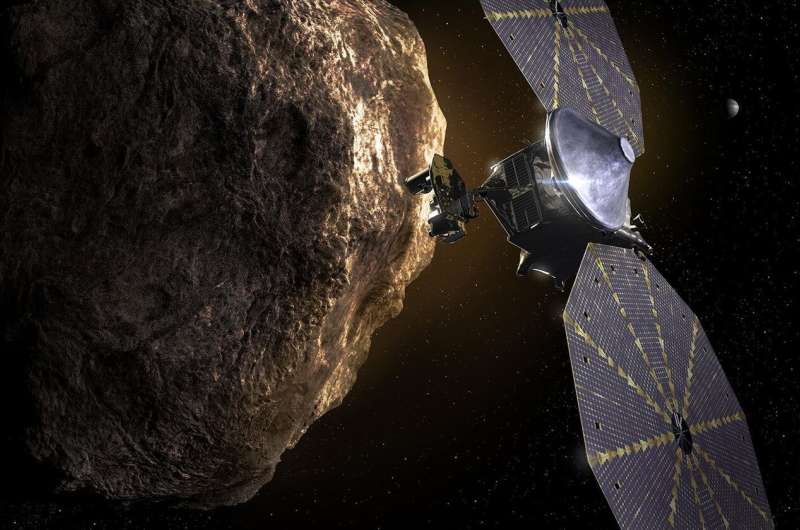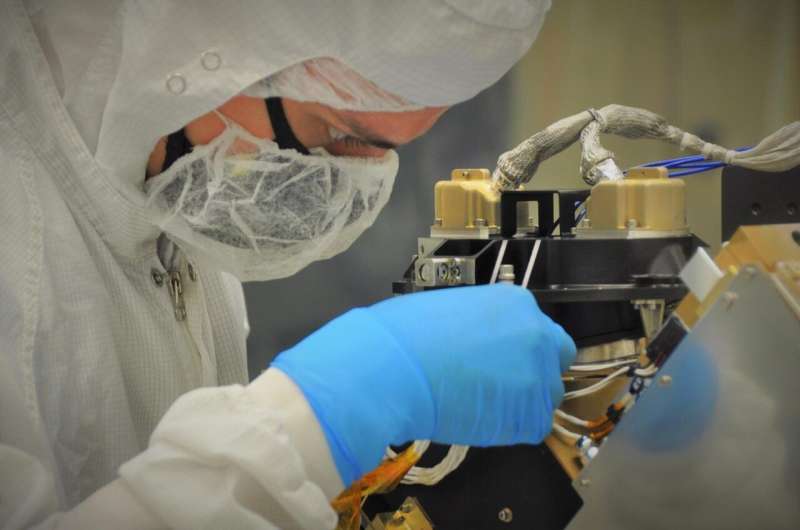Lucy mission one step closer to the Trojan asteroids

NASA's Lucy mission, led by Southwest Research Institute (SwRI), has achieved an important milestone by passing its System Integration Review and clearing the way for spacecraft assembly. This NASA Discovery Program class mission will be the first to explore Jupiter's Trojan asteroids, ancient small bodies that share an orbit with Jupiter and hold important insights to understanding the early solar system.
The Lucy spacecraft, during its nominal 12-year mission, will fly by and collect data from seven of these primitive worlds, plus a main belt asteroid. Because the Trojan asteroids are remnants of the primordial material that formed the outer planets, they hold vital clues to deciphering the history of the solar system. Lucy, like the human fossil for which it is named, will revolutionize the understanding of our origins.
Over the last few months, the Lucy team has focused on building and testing all the components of the spacecraft, including the scientific instruments, electronics, communications and navigation systems while observing all appropriate pandemic protocols. At this review, the Lucy team demonstrated to an independent senior review board, including NASA and external experts, that the systems and subsystems are on schedule to proceed to assembly, testing and integration.
The virtual review was held the week of July 27, 2020, with all team members and panel experts participating from their homes.

"No one anticipated that we would be building a spacecraft under these circumstances," said Lucy Principal Investigator Dr. Hal Levison of SwRI. "But once again, I have been impressed by this team's creativity and resiliency to overcome any and all challenges placed before them."
Successful completion of this review means the project can proceed with assembling and testing the spacecraft in preparation for launch. This assembly phase will begin later this month at the Lockheed Martin Space Systems facilities in Littleton, Colorado. Due to interruptions caused by the pandemic, the team revised its schedule to allow components most impacted to be integrated into the spacecraft at later times. Through these efforts, the mission has been able to stay on track to launch as planned in October 2021.
"It has been hard not being able to get together as a team and not being able to travel to see the instruments being built and tested," says Deputy Principal Investigator Dr. Cathy Olkin, also of SwRI. "Still, the team really has surpassed themselves, keeping everyone safe while still carrying out the crucial operations needed to get the mission past this major milestone."
Over the next six months, Goddard Spaceflight Center, Johns Hopkins University Applied Physics Laboratory and Arizona State University will deliver a suite of complementary imaging and mapping instruments to Lockheed Martin to be integrated into the spacecraft. This payload will enable Lucy to investigate, map and analyze this enigmatic population of Trojan asteroids.
SwRI is the principal investigator institution and leads the mission. Goddard will provide overall project management, systems engineering, and safety and mission assurance.
Provided by Southwest Research Institute


















